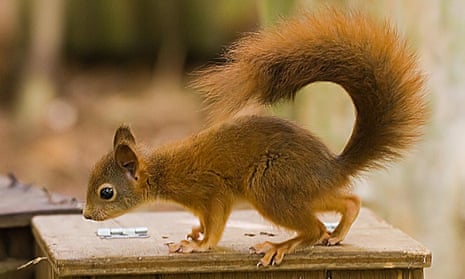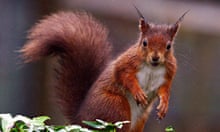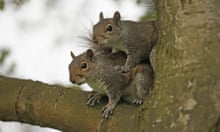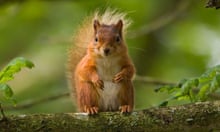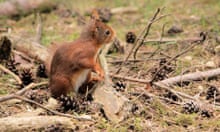Conservationists have turned to military strategy to ensure a new wild colony of red squirrels is protected from grey squirrels in Wales. A site at Ogwen valley, five miles from Bangor, has been selected because it is ringed by mountains and cut off from grey squirrels.
“It’s easier to defend an area if there are geographical pinch points,” said Craig Shuttleworth, a biologist based at Bangor Univserity and a specialist in squirrels. He added that he had adopted the approach of a “tactical military strategist” when planning where the colony should go.
But red squirrels are staging a comeback in the areas. A project to rid the island of Anglesey of grey squirrels has seen an initial colony of 40 red squirrels grow to 700 since 1998.
So successful has the project been that vanguard units of red squirrels have been crossing bridges to the mainland, where they have set up camp near Bangor.
Conservationists are now transporting red squirrels from around the country to boost the colony and provide genetic reinforcements. “We want to bring in the extra genetic diversity,” said Shuttleworth.
Ten squirrels bred by the East Anglian Red Squirrel Group in Norfolk are among those destined for Wales in special squirrel boxes.
Chrissie Kelley, head of species management at Pensthorpe Conservation Trust in north Norfolk, is overseeing the resettlement. “Our colleagues in Wales know we breed good squirrels and ours will be joined by breeding stock from other places around the country to ensure the widest genetic mix possible,” she said.
The trust has previously sent squirrels to Anglesey, including several offspring of one red squirrel known as Tortoiseshell, who gave birth to 50 kittens before she died aged nine this year. Five of her great-grand-kittens, including a pair called Fire and Flame, will be among those travelling to the Ogwen valley.
Native red squirrels have declined in Britain due to earlier persecution by people, habitat loss including deforestation and hence displacement by greys, and disease. Grey squirrels, which arrived from America in the 19th century, now outnumber reds by 20 to one and some conservationists fear the red species, Sciurus vulgaris, could disappear in a generation.
Shuttleworth said red squirrels were very rare in Wales and non-native grey squirrels caused significant damage to the environment, and it was legitimate to control grey squirrel populations.
“If you can’t take action to conserve a cute, cuddly animal like the red squirrel what hope do we have for the less charismatic species [that are at risk]?” he said. “It should be an easy win.”
